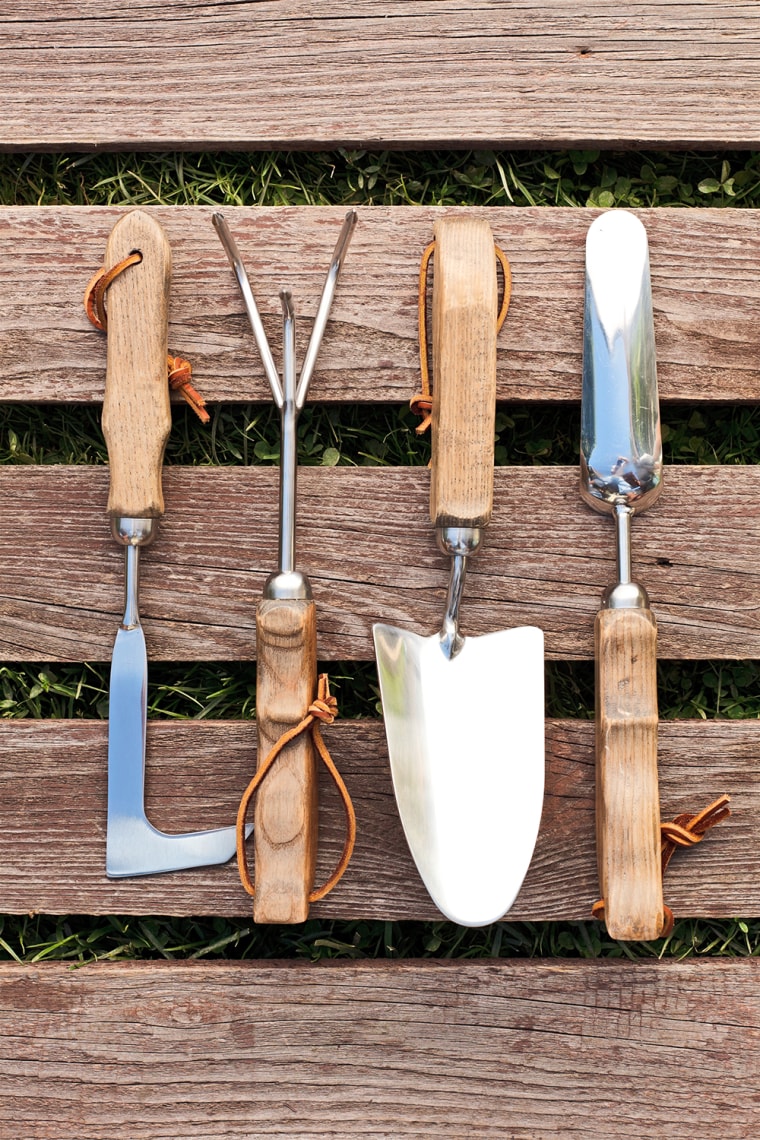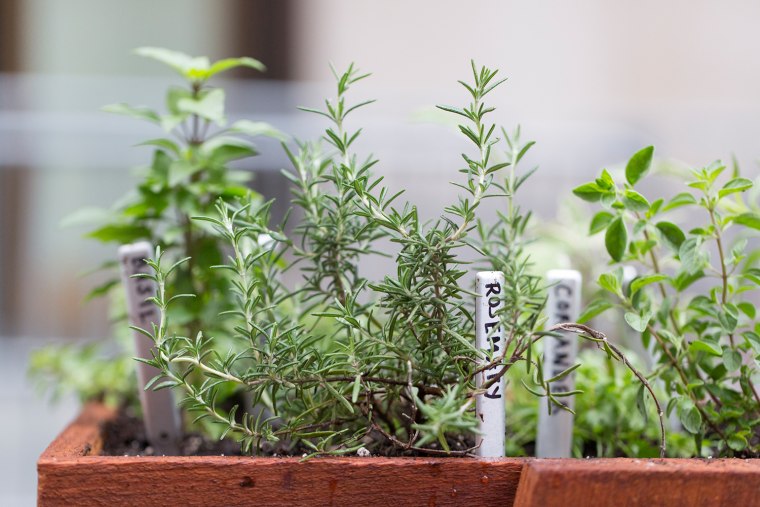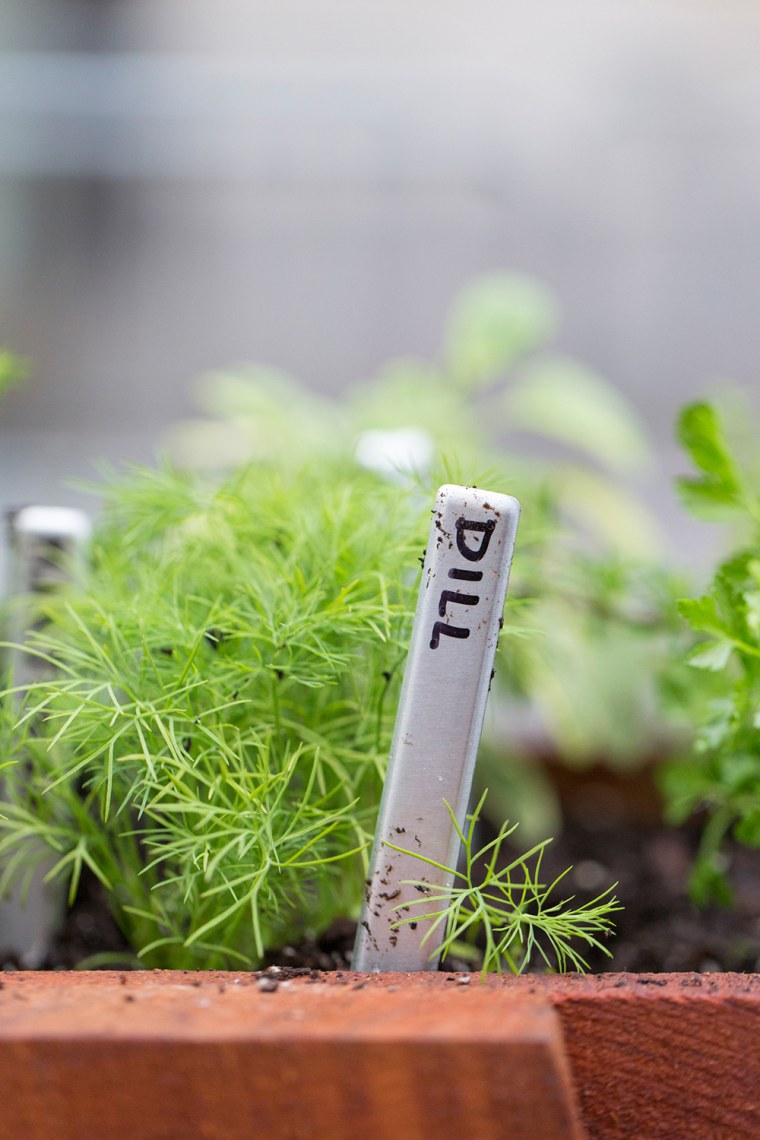Who doesn't love fresh herbs? There are uses for them in almost any recipe, both savory and sweet, and you can toss a few sprigs onto just about any finished dish as a garnish. They're aromatic and oh-so-delicious. Also, they're just plain pretty.
Martha Stewart joined TODAY Tuesday morning to offer a few tips on how to plant your own herb garden — just in time for picnic season. We've compiled her best tips and tricks for keeping things green and, well, alive.

A good foundation is important
Just like most plants, herbs thrive in well-draining soil. But you can (and should!) help out the drainage process by layering the bottom of the box with gravel and adding a loose, well-composted soil to the top. Oh, and there’s no need to add fertilizer. Your herbs will be just fine without it.
Herbs don't always play nice
Next, the fun part: You've got the task of deciding which plants you should include in your herb garden. Be aware that most plants grow best when they’re planted next to complementary varieties. Some herbs simply enjoy the same sorts of conditions and won’t get in each other’s way.
Here are a few happy combinations to get you started:
Parsley + Basil
Both of these fragrant and familiar herbs enjoy more water than their woody brethren. Chives, nasturtiums, hot peppers and cherry tomatoes also make great container mates for these guys.
Rosemary + Sage
These are perfect examples of what we’re talking about when we refer to “woody herbs.” They prefer more sun and drier soil than the leafier varieties, which is why it’s a better idea to plant them together than, say, with a basil plant, which will need a lot more water.
Oregano + Thyme
These semi-woody varieties keep good company with their sun-loving cousins, rosemary and sage. So, if you’re at a loss for space, go ahead and house them together.
Mint + Mint
Yes, you read that correctly. All types of mint tend to take over a pot. They’re not the most neighborly plant. You're best off growing them separately from other herb types. And even alone, you’ll want to leave plenty of space between each of them so that all the different fragrances and flavors don't meld.

Quench their thirst
Pop quiz: When’s the best time to add water? When the soil feels dry an inch below the surface! A few watering tips to keep in mind:
- Use a spouted can or a hose (for big pots), and add enough so that the water starts to drain through the holes.
- Remember that container plants are thirstier than plants in the ground, and those in porous pots, such as terracotta or wood, are even more so.
- Strangely enough, the smaller the pot, the more watering it will require.
- Keep the soil moist but not damp.
- Always water in the morning or the early part of the day, never at night.
Stay on the sunny side
Herbs will need at least 5-6 hours of good, hot sun each day. Those long hours of sunlight force herbs to produce the oils that give them their unique aromas and flavors in the first place. So…the more sun, the better!
Go ahead, get cutter-happy
Garden novices, this is good news for you. Generally, the more you trim them, the more flavorful and abundant the plants become. Frequent cutting will also encourage new leaf growth. Don't forget that herbs flourish super quickly, so you’re going to want to make sure to snip them early, before they start to flower.

Let nothing go to waste!
There are so many easy ways to save herbs, so there’s no need to throw any away. You can puree basil, for instance, and freeze it in ice-cube trays for future use. And you can dry thyme, rosemary and sage so you can sprinkle them onto dishes all year round. (Quick tip on the best way to dry herbs: After cleaning them, put them between paper towels and keep out of light to retain color and flavor.)